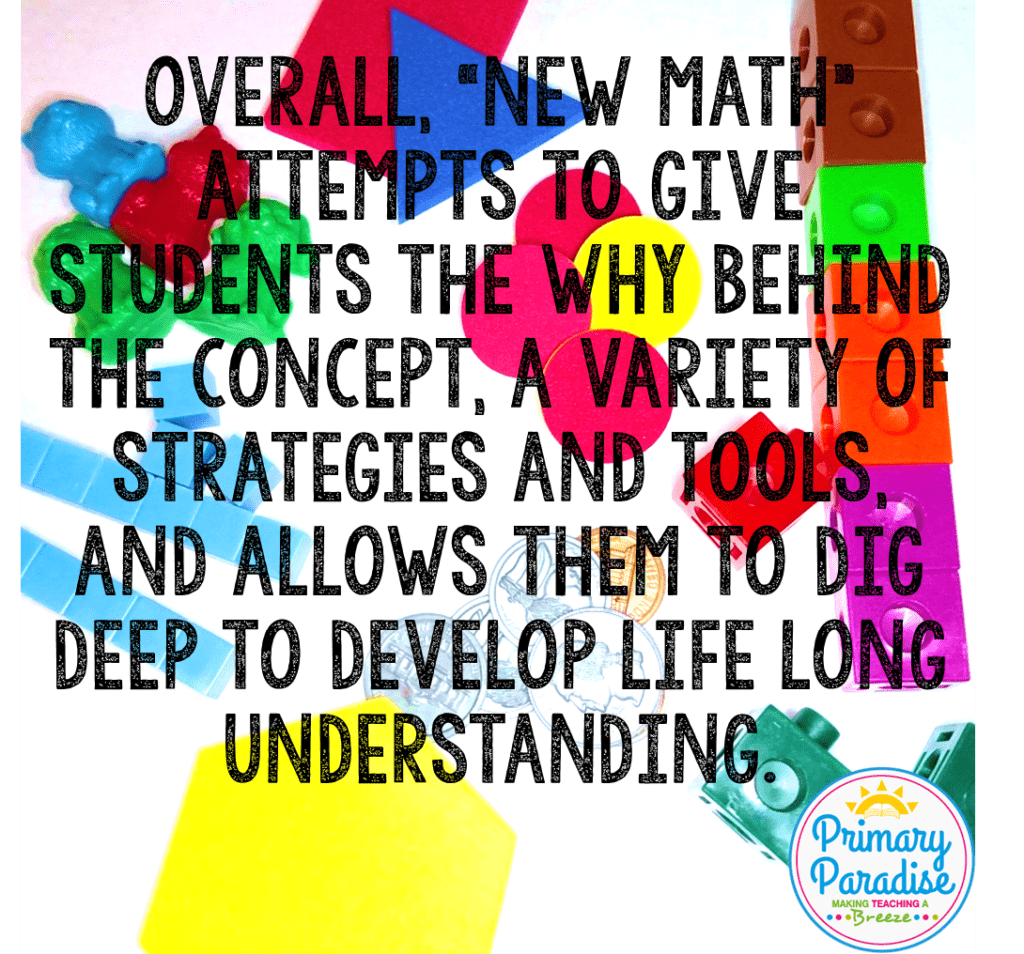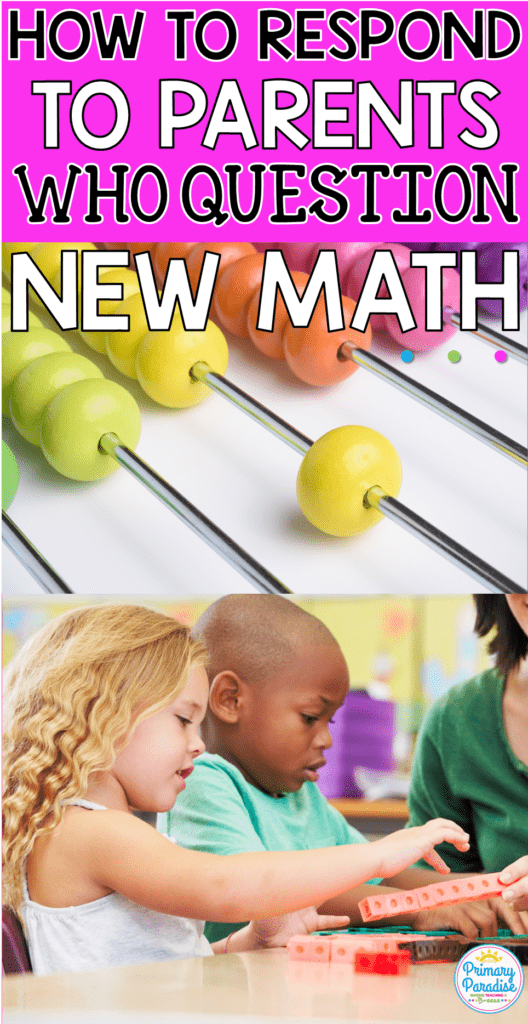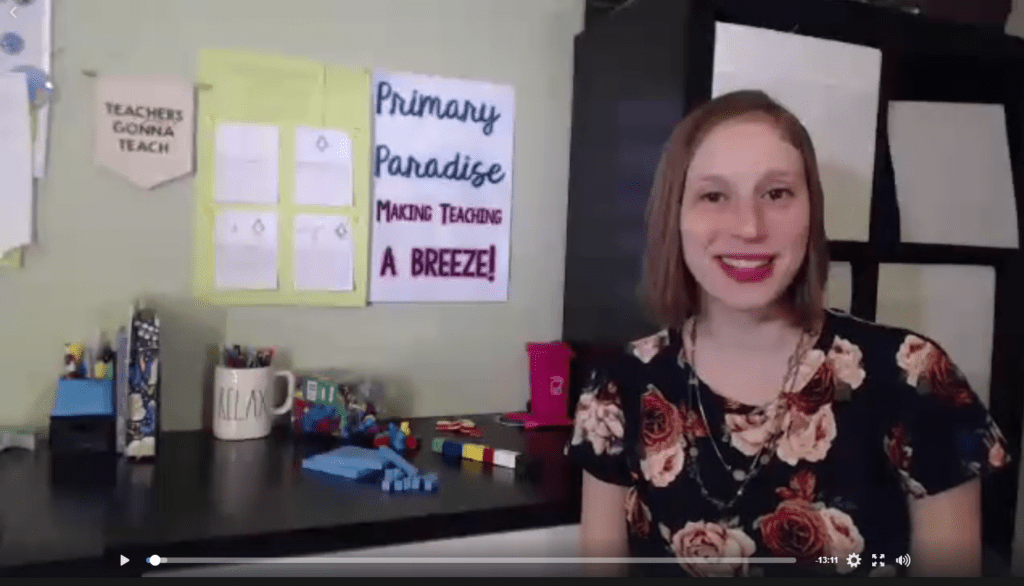Have you ever had a parent point to the fact that their child was struggling on “new math” or questioned the “crazy” or “illogical” ways that their child is learning? What about a parent who just doesn’t understand why the kids can’t learn how to do things the “normal” way, like they did when they were in school? I’ve been there too, and I’d like to share some responses that might be helpful in those (sometimes awkward) situations.
Watch my Facebook Live video on this topic here.
First, I need to state that I think it’s extremely important to listen to parents’ concerns and respond to them with respect because it’s so important to show parents that we’re all on the same team. We all want the same thing, and that is for their child to learn, grown, and succeed.
So, here are are some responses and insights that I find sharing with parents can really help in situations where they are questioning this “new” (crazy, wacky, insert an adjective here) math.
1. Educational standards are not new.
This is a big one. Until Common Core came on the scene in 2009, most parents just weren’t aware of learning standards, but states have had their own sets of standards since the 80’s. Today, states still have adopted either the common core standards, or have since created their own standards- which, in the case of most states, are almost exactly the same as common core, but with a new name.
2. New math standards state the SKILLS that should be taught, not HOW they are taught.
We’ve all seen the posts on social media. A seemingly nonsensical math problem or an example of what looks like insanely roundabout student work to get to an answer that, using the “old way” could be found in one step. These pictures inevitably have a caption blaming new math or common core math. The thing is, educational standards list skills that students need to know. They don’t mandate the means by which the students must learn the standards. Ironically,those posts are almost always examples of Everyday Math, which has been around since the 90’s. I find it helpful to explain to parents that standards tell us the WHAT and our curriculum gives us the HOW of what we teach.
3. New math standards go deep instead of wide.
Which person would you want to do brain surgery on your mother? A doctor who knows a little bit about every type of surgery, or a surgeon who specialized in only brain surgeries with 20 years experience? It’s a no brainer (pun totally intended). The older math standards asked students to learn a wide variety of skills each year, but did not go very deep. I remember when I was student teaching with the old NJ standards, the number of skills my students were expected to do was (in my mind) insane. And it seemed like just when they were starting to understand a topic, we’d move onto a new topic. This is not how life long learning occurs. New standards ask students to learn a more narrow set of skills in each grade level, but dig much, much deeper so they can fully understand them.
4. There’s a reason behind the new “crazy” strategies.
As a kid, when I was adding two digit numbers, I “carried” the 1. I didn’t know why I carried the 1. I didn’t really know what “carrying the 1” even meant. I just did because, well, my teacher told me to. And I’d get the right answer, so yay, right? Except, as an adult, I’ve always struggled with mental math, and a few other math skills that I use daily. It wasn’t until I was teaching 1st and 2nd grade, and using “new math” that I actually realized WHY I was carrying the 1- because I had made a ten. Believe it or not, teaching first grade helped me understand math better and improved my mental math abilities. Why? Because new math asks students to think. We want students to understand the why behind what they do because understanding the WHY is important to creating life long skills. So yes, sometimes we’re asking students to “do more work” to find an answer, but the belief is that, by teaching them the reasoning instead of just telling them to blindly “carry the 1” they’ll truly understand what they’re doing which will cement their learning. I also believe this is true with explaining to parents the why of “new math”. If we can show them WHY their children are learning differently than they did as kids, they’re more likely to get on board.
5. New math is like a buffet of strategies.
“But that way doesn’t make sense to little Timmy.” With new math, we ask our students to find the answer to the same type of problems multiple ways. We teach them that you can get to the final destination more than one way. And this can be confusing and frustrating for parents who don’t understand WHY they can’t just learn it ONE way. The reason is pretty simple. When I was in school, we learned how to add one way. We learn how to solve word problems one way. Here’s the problem. We don’t all think the same. So, maybe it seemed simple, but really, teachers were leaving out whole groups of learning. With “new math”, we introduce our students to a buffet. We show them that you can solve problems different ways, and then guess what. We give them choices. You don’t like ham? Okay, then you can have chicken. You don’t like to draw it? Then you can use a ten frame. Yes, we ask all students to try everything. That way, they can figure out (with our guidance) what strategies work for them. I know in my classroom, I encouraged my students, after having learned all of the difference strategies, to use the ones that worked best for them. And that was the easiest and most freeing way to differentiate.
Bonus: Teachers want their students to succeed.
The last response is this: make sure your students’ parents know that your ultimate goal is for their child to succeed. I always let them know that their child’s growth and learning was at the route of all of my decision making and I was always available to help parents understand the new math and I would do everything in my power to help their children grasp each concept as well.
Is “new math” perfect? No. Are there some curricula out there that are better than others? Of course. But, overall, new math attempts to give our students the why behind the concept and a variety of strategies and tools to solve different problems while allowing them to dig deep into each concept instead of forcing them to learn 1 strategy “because that’s how you do it” before quickly moving on to another skill. I know that I want my students and my own children to be critical thinkers, and I, for one, and thankful that new math gives them the opportunity to do just that.
You can join my FREE Facebook Club for k-2 teachers here!
AND BE SURE TO SIGN UP FOR MY NEWSLETTER FOR MORE TIPS, TRICKS, IDEAS AND FREEBIES!
Find me on Instagram, Facebook, Twitter, and Pinterest!





